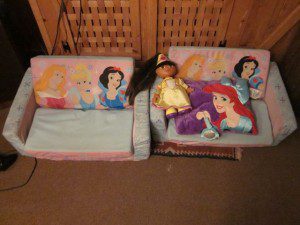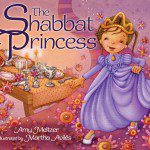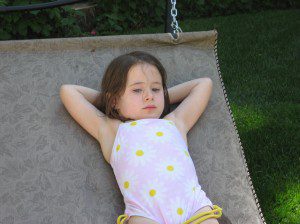I have two daughters. When they were born, I imagined they would be tomboys. They would climb trees and love to get muddy. They would wrinkle their noses at Disney Princesses, and consider Barbie dolls something to operate on, not dress up, just as I did as a little girl.
My girls do love to climb trees and get muddy. (Lesson: be careful what you wish for.) But they are decidedly not tomboys. Zoe refused to wear anything but dresses for most of her preschool years, and they both begged for their share of princess merchandise, Barbies and (I hate to admit this one) Bratz dolls. Through it all, I tried to remember the sage advice of my friends Jane and Joan, the (partnered) moms of two creative and fiercely independent kids: “We are repelled by Barbie, but we are more repelled by parents who forbid their children from playing with things they love.”

So I gritted my teeth, drew a few weak boundaries when I simply couldn’t help myself – no plastic high heeled shoes beyond the walls of the playroom, no Disney princess food (and here I use the term “food” loosely), none of truly awful straight-to-dvd versions of the princess movies (The Little Mermaid part seventy-one) – and restrained myself from hiding their toys (usually). I reminded myself that it wouldn’t last forever. Or maybe it would, and that would have to be ok too.
And indeed, at 6 and almost-8, my girls are no longer into princesses. Each has her own unique blend of interests – Zoe loves to dig up worms, punch her sister in the nose, and pick out lipstick for Bubbie while she gets her hair curled (also by Bubbie.) Ella is a fearless climber, and now she’s the one who refuses to wear dresses. But she adores Project Runway and designing fashions for her sister. (And get this – she wears the disney princess t-shirt her uncle bought her ironically.)
I guess I shouldn’t be surprised that the toys and images that appeal to our kids aren’t necessarily indicators of how they will grow up. After all, as a pre-teen I begged my mother for a life size Farrah Fawcett head for styling, yet much to my girls’ disappointment there is not a drop of makeup or hair product in our house. (Except my husband’s hair gel. For his ponytail. Just saying.) But I’m still relieved that saying yes to princesses (in moderation) does not seem to have had long term deleterious consequences. And who knows where saying no to princesses might have led us?
 With all my ambivalence about princesses, I must admit to some sheepishness about the title (and topic) of my forthcoming book, The Shabbat Princess. It’s the story of a little girl who, well, loves princesses. When she hears about the tradition of welcoming the Shabbat Queen on Friday night, she decides to invite the Shabbat Princess instead, and sets out to turn an ordinary dinner table into something very, very fancy. What can I say in my defense? Well, the best advice to any writer is “write what you know.” And at the time that I wrote this manuscript, we were in full Fancy Nancy/Pinkalicious/Princess mode. This is what I knew, and my book was a way to adapt (ok, co-opt) the message into a value I really believe in. Ideally, I could have crafted a story that didn’t attach *fancy* to girl. But, I actually wanted to get the book, um, published.
With all my ambivalence about princesses, I must admit to some sheepishness about the title (and topic) of my forthcoming book, The Shabbat Princess. It’s the story of a little girl who, well, loves princesses. When she hears about the tradition of welcoming the Shabbat Queen on Friday night, she decides to invite the Shabbat Princess instead, and sets out to turn an ordinary dinner table into something very, very fancy. What can I say in my defense? Well, the best advice to any writer is “write what you know.” And at the time that I wrote this manuscript, we were in full Fancy Nancy/Pinkalicious/Princess mode. This is what I knew, and my book was a way to adapt (ok, co-opt) the message into a value I really believe in. Ideally, I could have crafted a story that didn’t attach *fancy* to girl. But, I actually wanted to get the book, um, published.
This fall, as I set out to promote the book, I hope to prove that the message of The Shabbat Princess – that there’s a value to setting an extra-special shabbat table – is not gender-specific. If you have any suggestions about how to actually accomplish that, I’d be truly grateful. In the end, I want to promote the book and sell lot of copies, and maybe even some tie-in merchandise. But I don’t want to have created any products that moms like me are tempted to hide.
And now, once again, the BOOK TRAILER I MADE MYSELF!

